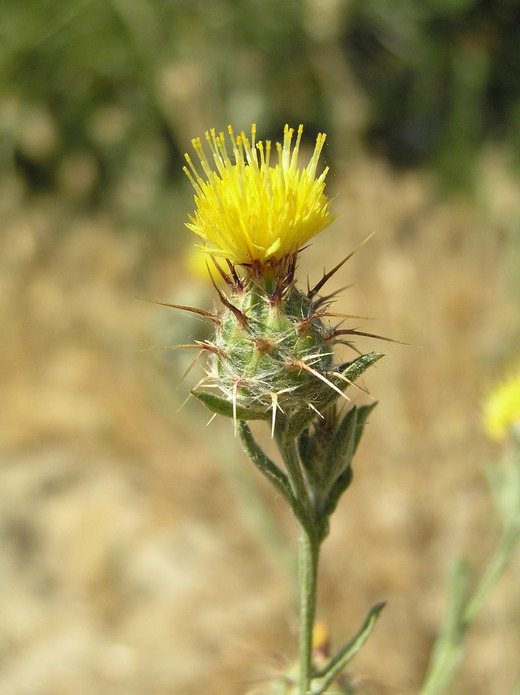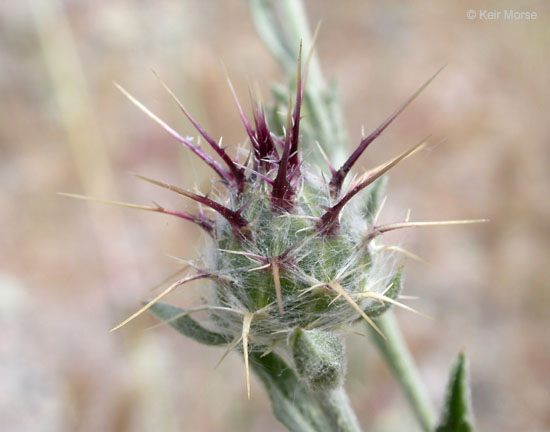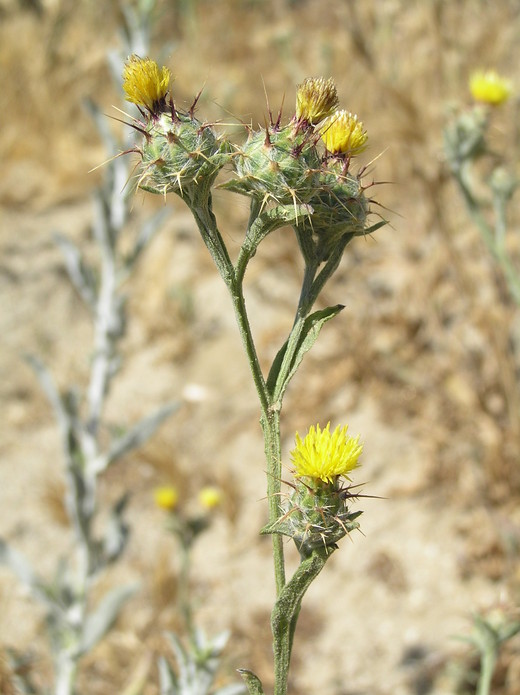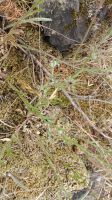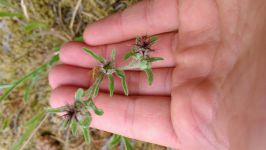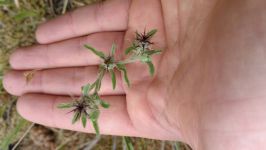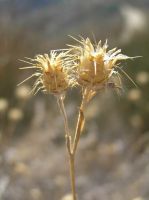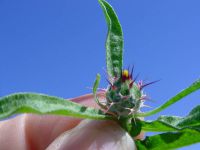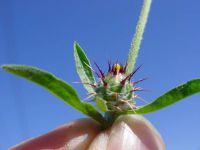Distribution: Occurring chiefly west of the Cascades in Washington; British Columbia to California and Mexico, east to Texas and eastern North America.
Habitat: Roadsides, meadows, balds, fields, ditches, wastelots, and other disturbed, open areas at low to middle elevations.
Flowers: June-September
Origin: Introduced from the Mediterranean region
Growth Duration: Annual, Biennial
Conservation Status: Not of concern
Pollination: Bees, flies, beetles, wasps
Annual, 1.5-7 dm. tall, lightly covered with crisp hairs, the stem with narrow wings from the leaf bases.
Basal and lower cauline leaves oblanceolate, toothed to lyrate-pinnatifid, 3-15 cm. long and 5-35 mm. wide, usually deciduous; middle and upper cauline leaves smaller, becoming linear-oblong and entire upward.
Heads few to numerous; involucre 8-15 mm. high, broader toward the base, its middle and outer bracts spine-tipped, the central spine 5-9 mm. long; the inner bracts purple tinged; flowers yellow, all alike; pappus 1.5-3 mm. long; receptacle strongly bristly.
Publication: Sp. Pl. 2: 917. 1753.
PNW Herbaria: Specimen records of Centaurea melitensis in the Consortium of Pacific Northwest Herbaria database
WA Flora Checklist: Centaurea melitensis checklist entry
OregonFlora: Centaurea melitensis information
E-Flora BC: Centaurea melitensis atlas page
CalPhotos: Centaurea melitensis photos

